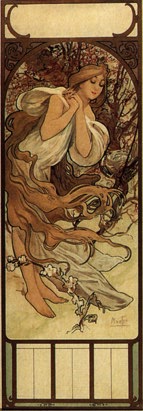
 Harris, Harris & Donahue Literary Agents http://harris-donahue.tripod.com |

"Pilgrim, pilgrimage and way are but myself toward myself". - Farid Ud-Din Attar If we want to know the point and purpose of life we must turn to the findings of Depth Psychology. No grasp of modern thought is complete without an understanding of this. It is based not on Freud, whose findings were rooted in an analysis of individuals, but on the magnificent pioneer work of Carl Jung, extended and consolidated by Erich Neumann, late President of the Israel Association of Analytical Psychologists, as in Neumann's greatest seminal work The Origins and History of Consciousness (Routledge & Kegan Paul Ltd., London, Princeton paperback, 1970). Erich Neumann was a native of Germany who had to flee from the Nazis. He worked with Jung at Zurich and later went to Tel Aviv, where he died in 1960. In the book's Foreword, Jung writes of Erich Neumann: "...he has succeeded in constructing a unique history of the evolution of consciousness, and at the same time in representing the body of myths as the phenomenology of this same evolution." A chief contribution to Depth Psychology is Neumann's concept of "centroversion". "Centroversion is the innate tendency of a whole to create unity within its parts and to synthesize their differences in unified systems." He shows that the individual consciousness develops through the same archetypal stages of development that mark the history of human consciousness as a whole. World myths give the key to this development. Part One deals with these mythological stages; They begin with the Creation Myth. At first we have perfection, wholeness, symbolised by the snake Uroborus; mouth to tail; world and psyché are still one with, as yet, no reflecting, self-conscious ego. The coming of light is a chief aim; light is opposed to the darkness of the unconscious. A chief symbol of original perfection is the circle, along with the sphere and the egg. Plato, in Timaeus, illustrates this: "Therefore the demiurge made the world in the shape of a sphere...the most perfect and the most equal to itself". The "round" of mythology is also the womb. The uroborus of the maternal world is life and psyché in one. It supplies nourishment, pleasure, protection, warmth and comfort; it is the refuge of humanity as the Mother fulfils, bestows and helps. Worship of the Great Mother is a major aspect of this initial state of Paradise. Whenever the harmful aspect of the Great Mother is paramount or counterbalances her positive and creative aspect the uroborus is still operating in the background. the adolescent stage has not been overcome and the ego is not yet independent from the apron-strings - a dangerous situation. Narcissus is a victim of Aphrodite, the Great Mother. His embryo ego is overpowered by the fatal love over which she rules. That she operates through his reflection, as his plenty makes him poor, only illustrates her treacherousness. The masculine principle must become strong enough to achieve consciousness of itself - no longer just the satellite son of the maternal uroborus, chained to the almighty unconscious. The youth must become independent, capable of standing alone even if this means exchanging some home truths with parents. The next stage is the separation of the World Parents as the youth matures. Consciousness is strengthened further through taboos (which must be broken at times) and moral attitudes replacing unwitting impulse by knowing or conscious action. The presiding centre of conscious action through the will, and of conscious knowledge through learning, is now the ego. This process is accomplished by those individuals who are differentiated, individualised - their own men - as they become representative bearers of the group's consciousness, the leaders. The immortal soul of the divine king Osiris becomes the immortal soul of each and every Egyptian just as Jesus, the Saviour, becomes the Christ-soul of every Christian, the Self within. The story of the hero, embodied in myths, is the history of the freeing of this ego as it fights to emancipate itself from the power of the unconscious, to hold its own against overwhelming odds. It is a thrilling and dramatic conflict, on which hinges the fate of humankind. With the birth of the hero, his total personality has detached itself from the world and the unconscious. The stages of the Hero Myth represent the stages in the personal development of every individual, however feebly and distantly. By mastering the masculine and feminine aspect of himself and consolidating an inner core of personality, the hero completes a pattern of evolution, Carl Jung's "individuation". When the hero identifies himself with the masculine "heaven" he is ready, like St George, to take on the dragon. All heroes are "god-begotten". Help from above, the feeling that God is on his side, makes possible the battle with the dragon of the Great Mother. He upholds the spiritual world, becoming the liberator, the saviour, the innovator, the bringer of wisdom and culture. The mythological fate of the hero portrays all conscious development as the sleepwalkers awake to conscious understanding. The stages are repeated in every human being, although, through weakness, the development may be arrested at any stage and even lead to regression. The chief or basic elements in the Hero Myth are the birth of the hero, the dragon fight and the treasure as he slays the parents symbolically in the process of finding himself. What is the goal of the dragon fight? It involves the maiden-in-distress and the treasure which is so hard for the Prince to find. It is in this struggle that, fighting for his soul, the hero proves he is a hero in a process of self-transformation. The aim of the dragon fight is nearly always the virgin, and the treasure. In early myths, religion and ritual, in fairy tales and in poetry, gold, precious stones and chaste pearls signified the spiritual values essential for success. Similarly, the elixir of immortality, the philosopher's stone, miracle rings, the water of life, magic cloaks, swords and shields all signify the treasure of understanding. The fight to capture and free the partner, the Princess, embodies the hero's fight for his soul, his Psyché. Successful union with her is the desired outcome of dragon fights all over the world. The conquests of monsters and enemies - the cruel and therefore short-sighted - lead to the hero's triumphal union with the Earth Goddess which, through magic, restores the fertility of the year, rebirth in the spring, and resurrection. The development of the personality is threefold. First there is adaptation to the outside world, extraversion. Second is inward adaptation to the psyché and archetypes, or introversion. Third is centroversion, or individuation within the psyché itself. This is independent of the other two. The extravert is a heroic man of action. The introvert frees, through culture and ideas exalting values as wisdom, the water of life. For the third type of hero, self-transformation is the goal in a natural basic trend of his psyché, self-transformation from mortal to god achieving the Holy Grail of eternal life. Thus the hero myth becomes the myth of self-transformation with one's partner, the story of man's divine sonship, latent from the beginning but brought to fruition only through the valiant union of ego with self and psyche. The hero's immortal soul becomes the property or part of every individual. The archetypal stages of conscious development involve transfiguration, the individuation of modern man. Now comes something new: consciousness turns inward to become aware of the Self. Ego revolves around this in the pursuit of identity without alienation. This begins the assimilation of the unconscious into modern consciousness, especially with the sciences. There is a shift of emphasis from the ego, with its thrust to power in creating a niche for itself within society, to the Self. This is the latest stage in the evolution of human consciousness. The human wins the crown of gold instead of thorns and the indestructible heart of diamond. Battling against disintegration and the bad, self-destructive elements of the old order, the hero conquers fear. He dares the evolutionary leap to the next stage refusing to cling to the conservatism of the old and outworn. In the process he turns fear into joy. He has fought for and won his psyche, his anima, his soul. He goes beyond martyrdom and crucifixion to resurrection. Centroversion has been achieved. Erich Neumann notes that, in this time of spiritual and social crisis, Western man is moving steadily towards the emancipation of man from nature and consciousness from the unconscious. He concludes: "A future humanity will then realise the center, which the individual personality today experiences as his own self center, to be one with humanity's very self, whose coming to birth will finally vanquish and cast out that old serpent, the primordial uroboric dragon." At long last, we are waking up! Desmond Tarrant
|
||||||||||||||||



